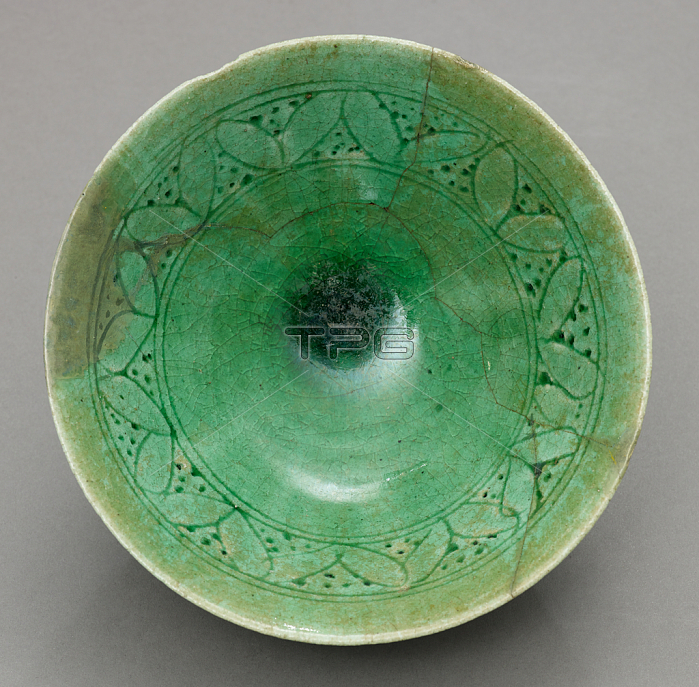
7264983 Bowl, c.1170-1220 (thrown flintware, glaze) by Iranian School, (12th-13th century); 6.4 cm; Manchester Museum, The University of Manchester, England; (add.info.: A band of vegetal decoration comprising repeated leaf pairs on a pierced ground is incised onto the interior. The grass-green transparent glaze pools densely on the interior base. The exterior is undecorated apart from the piercing marks. A layer of glaze covers the perforations, creating glassy \'windows\' and gathering thickly two thirds of the way down the body on the exterior. The body of this bowl is made of fritware (also known as stonepaste), an artificial paste mainly composed of ground quartz with some clay and glass frit added. This material had been developed in Egypt over the preceding century but was widely adopted for fine glazed ceramics in Iran during the 12th century CE due to its attractive whiteness, which allowed glazes and underglaze-painted designs to show up brightly. It could also be moulded into complex forms, and held glazes better than earthenware. Fritware was used for most high-quality glazed ceramics across the Islamic world following this period.); by Manchester Museum, The University of Manchester.
| px | px | dpi | = | cm | x | cm | = | MB |
Details
Creative#:
TOP28732043
Source:
達志影像
Authorization Type:
RM
Release Information:
須由TPG 完整授權
Model Release:
no
Property Release:
no
Right to Privacy:
No
Same folder images:

 Loading
Loading